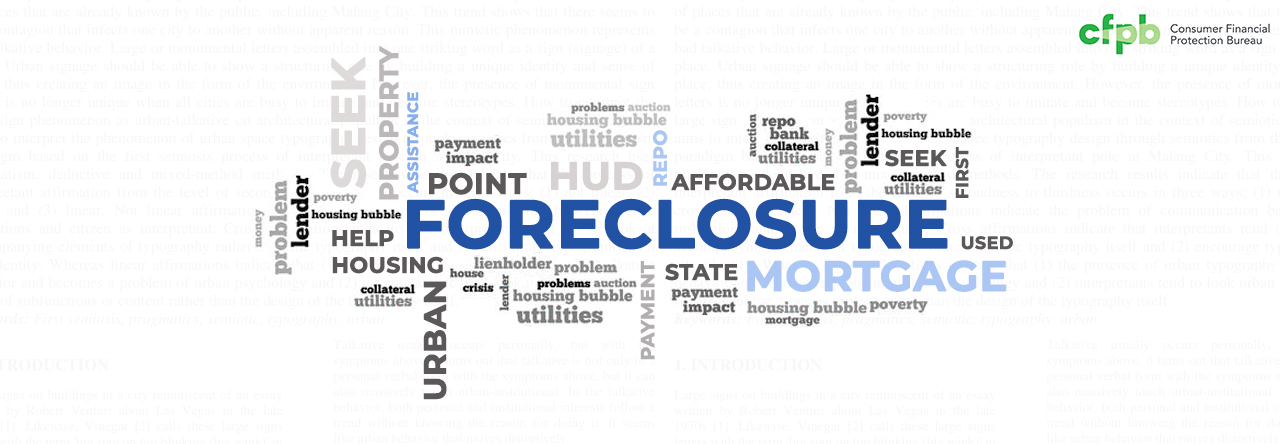A month before the July 31st Forbearance Moratorium deadline, there was once again a lot of talk about what’s next. The deadline which started almost a year ago, had been extended each quarter until we reached D Day (July 31, 2021).
On June 24, 2021, we heard from the President’s desk in Washington D.C., Fannie Mae, Freddie Mac, and the CFPB (Consumer Financial Protection Bureau). Now that we are 10 days into the deadline, what should we expect? Do we actually begin foreclosure actions? Are all lenders and servicers’ Loss Mitigation departments ready for the storm of loans to hit their books as foreclosures?
In light of this economic tragedy, stemming from an uncontrollable pandemic, federal agencies are asking servicers to offer “all” options available to borrowers coming out of forbearance. On August 10th, CFPB posted the following report for immediate release:
Mortgage Servicers’ Pandemic Response Varies Significantly
Are We Doing Enough for Borrowers?
WASHINGTON, D.C. – The Consumer Financial Protection Bureau (CFPB) today published a report detailing 16 large mortgage servicers’ COVID-19 pandemic response. The report’s data metrics include call handling and loan delinquency rates, and they highlight the industry’s widely varied response to the pandemic. For example, many servicers managed to handle high call volume with an average hold time below 3 minutes, while others reported keeping callers waiting for as long as 26 minutes. The CFPB expects servicers to compare the report’s findings to their own internal metrics to identify opportunities for, and demonstrate concrete efforts toward, improvement.
“Many emergency mortgage protections are winding down, and servicers have had ample time to prepare for the millions of distressed homeowners who need their assistance,” said CFPB Acting Director Dave Uejio. “Today’s report should inform servicers’ own data reviews as they determine whether they are doing enough for borrowers. Servicers who find themselves at the bottom of the pack should immediately take corrective steps. The CFPB will hold accountable those servicers who cause harm to homeowners and families.”
The CFPB used supervisory data from 16 large servicers to understand how they are interacting with homeowners during the pandemic and whether those interactions are effective. The CFPB is monitoring key data metrics, including:
- Call metrics to understand how servicers managed the volume of homeowner calls. The metrics in the report include Average Speed to Answer (ASA) and Abandonment Rates (AR), a measure of how many borrowers disconnect from servicing calls prior to completion. Most servicers reported abandonment rates of less than 5% during the reporting period, while others exceeded 20%, and one peaked at 34%.
- Pandemic forbearance exit metrics to determine the support provided to homeowners transitioning out of COVID-19 hardship forbearance programs. Many servicers saw increased delinquent exit rates in March and April 2021, and some servicers were clear outliers. For federally backed loans, 3 servicers, which used the same sub-servicer, had relatively higher delinquent exit rates for one or more serviced portfolios – consistently exceeding 50%.
- Delinquency metrics to identify, among other things, variation of homeowner delinquency rates among servicers. Overall delinquency rates ranged from about 1% to 26% for both federally backed and private loans. (Differences in delinquency rates may reflect the differing composition and risk profile of each servicer’s portfolio.)
- Borrower profile metrics to determine whether and how servicers track borrowers’ race and limited English proficiency (LEP) status. Nearly half of servicers in the report clearly stated that they did not collect or maintain information about borrowers’ LEP status, which may lead to borrowers not receiving needed language assistance. Some of the servicers also reported not maintaining data on borrowers’ race, which may raise the risk of fair lending violations.
- Pandemic assistance enrollment metrics to understand the types of assistance programs offered to homeowners and whether homeowner applications to those programs were accepted or rejected. Forbearance was widely available for borrowers with both federally backed and private loans, and the reported denial rates were consistently low for both loan types.
The CFPB continues to encourage servicers to enhance their customer communication capabilities and outreach efforts. Servicers should educate and assist borrowers in avoiding delinquency and enrolling in widely available assistance and loss mitigation options. The CFPB will continue its oversight work through examinations and enforcement, and it will hold servicers accountable for complying with existing regulatory requirements, as well as the amended Mortgage Servicing Rules that take effect August 31, 2021.
Read the full Mortgage Servicing Metrics Report.
The Consumer Financial Protection Bureau is a 21st century agency that helps consumer finance markets work by making rules more effective, by consistently and fairly enforcing those rules, and by empowering consumers to take more control over their economic lives. For more information, visit consumerfinance.gov


